The building at 486 Broadway was designed by Lamb & Rich architects in 1882, shortly after the pair founded their architectural practice. During the late nineteenth-century, Lamb & Rich were commissioned for several high-profile developments including Henderson Place, a group of houses on the Upper East Side renowned for their distinguished architectural characteristics. In his New York Times column “Streetscapes”, Christopher Gray described Henderson Place as:
“One of the earliest housing developments to break the brownstone’s iron grip, with many nooks and crannies, multipaned windows, and roof profiles as picturesque as the Alps.”
New York Times
In keeping with their distinct architectural style, 486 Broadway features outstanding Romanesque and Moorish architectural elements, such as round-arched windows, decorated panels, and stylized neo-Grec ornaments adorning the brick facade among a landscape of towering cast-iron buildings.
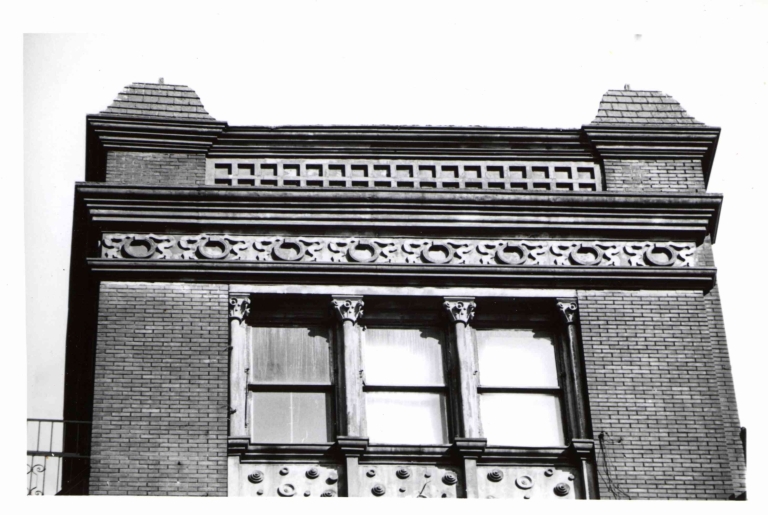
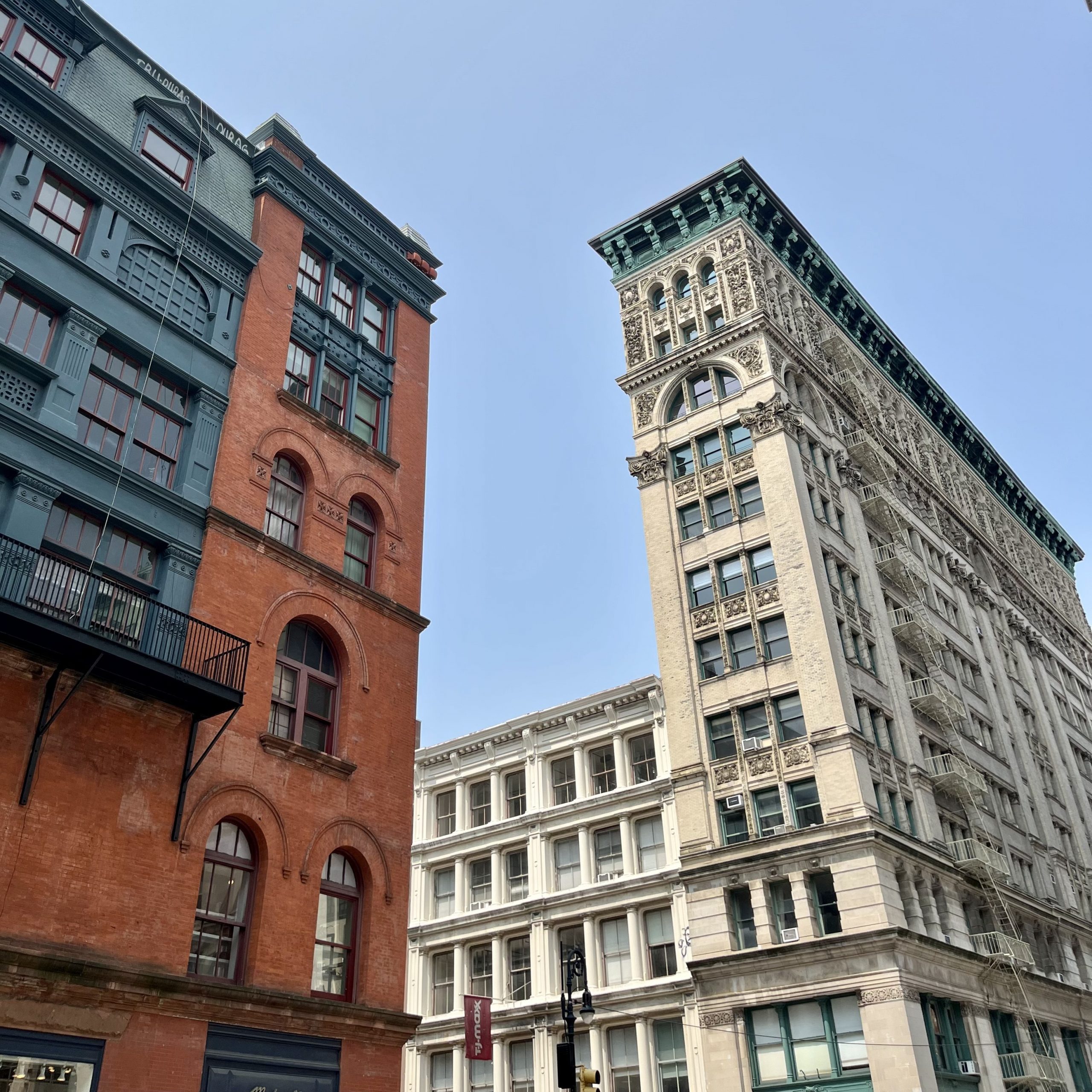
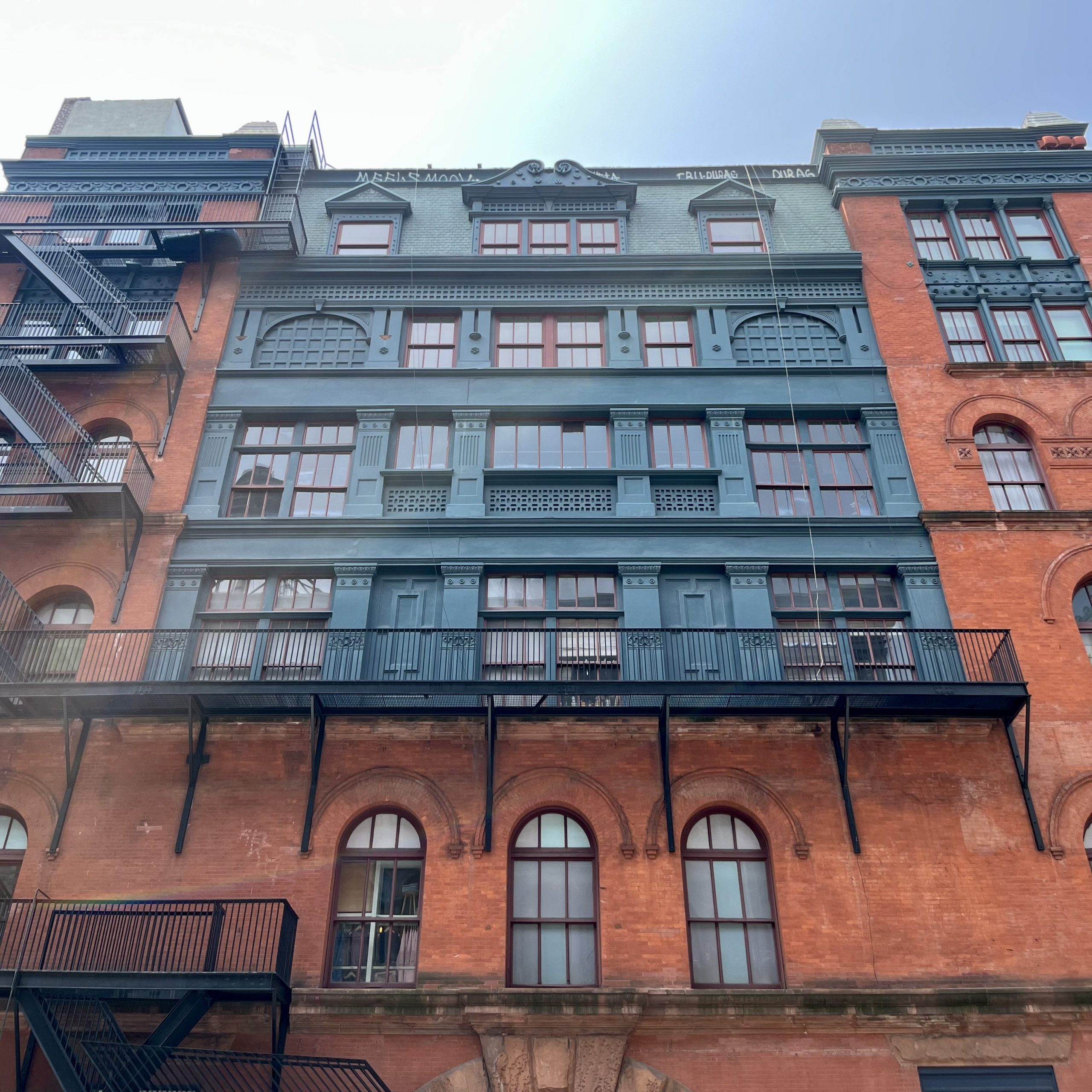
The commercial building at 486 Broadway has attracted many different occupants over the years. In 1885, the ground floor was leased to the Mechanics and Traders Bank. Eventually, manufacturing companies in the garment industry moved into the upper floors of the building, including New York Sewing Machine Emporium and Wilson Brothers. Madewell, a modern leader in the apparel industry, occupies the first and second floors of the building today.
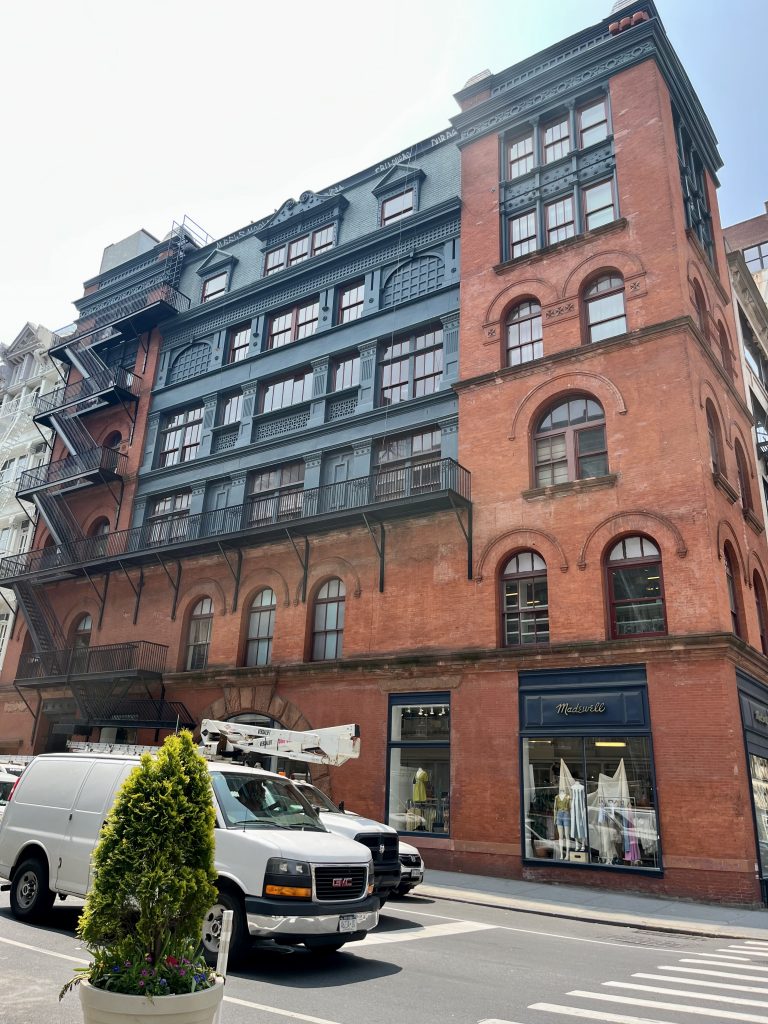
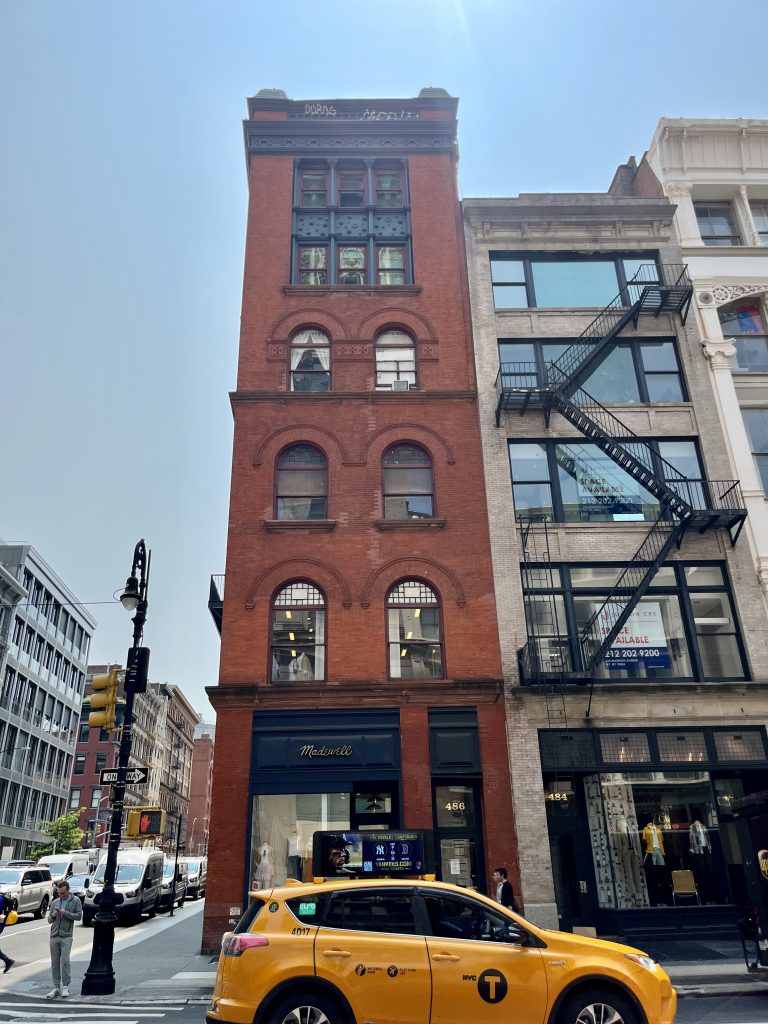
In the early 1970s, the city passed the landmark Joint Living Work Quarters for Artists legislation that allows certified artists to reside in converted live-work lofts that were originally zoned for manufacturing uses. Today, the upper floors of 486 Broadway are occupied as certified Joint Living Work Quarters for Artists.
In 2022, Vornado sold 484-486 Broadway to Tri-Star Equities for $23.5 million.